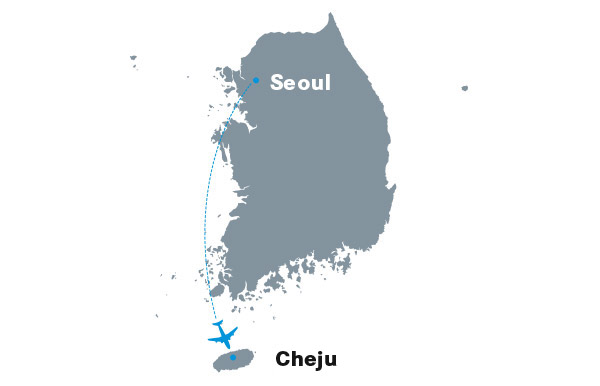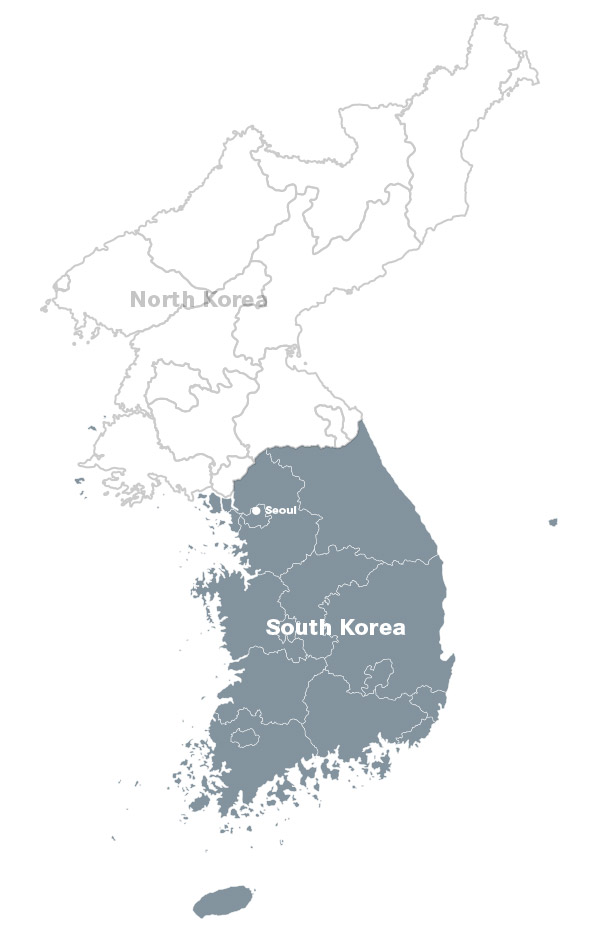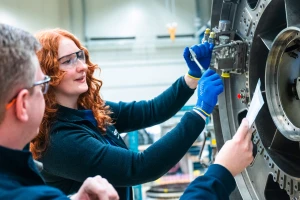aviation
South Korea’s number two: Asiana flies high on growth trajectory
Asiana Airlines might not be a household name on the international stage yet, but it is a five-star alternative for intercontinental routes.
author: Andreas Spaeth | 6 mins reading time published on: 01.03.2019
author:
Andreas Spaeth
has been traveling the world as a freelance aviation journalist for over 25 years, visiting and writing about airlines and airports. He is frequently invited to appear on radio and TV programs to discuss current events in the sector.

Which is the world’s busiest air route? An ideal question on any TV quiz show. There’s a good chance that no contestant would know the answer or even come up with the correct guess. That’s because, in terms of passenger traffic, the world’s most popular route is actually a domestic route in South Korea: from Gimpo, Seoul’s domestic airport, to the popular resort island of Cheju—about an hour’s flight from the capital. According to statistics from travel data provider OAG, almost 14 million passengers make this short hop every year, about double as many who fly the most popular domestic routes within Japan. Located at the southern tip of the Korean Peninsula in East Asia, South Korea is tiny compared to neighboring China to the west and Japan to the east. Even though South Korea is slightly smaller than Iceland in size, it is home to some 51 million inhabitants.
According to analysts at the Centre for Aviation (CAPA), South Korea has a thriving domestic aviation market that served 65 million passengers in 2017. This is largely attributable to the country’s topography as the many mountains and stretches of water restrict overland travel, although there are competitive high-speed trains that run on trunk routes. As the country’s flag carrier and largest airline, Korean Air has long dominated the domestic market. But when the Kumho Asiana Group—a multi-industry conglomerate typical of Korea—launched Asiana Airlines in 1988, a second player arrived on the scene. The full-service airline currently generates roughly one-third of its business within its home country where it serves ten destinations, but Asiana has also grown into a well-respected, mid-size global carrier. It launched its first international services back in 1991, initially within the Asia-Pacific region and to Los Angeles. Shortly after, it added Vienna and Brussels to its route map as its first European destinations.
With its fleet of 83 aircraft, Asiana is relatively small compared to some other East Asian carriers. Its approach to growth is conservative, with a focus on long-haul services. Asiana currently flies to 51 cities in the Asia-Pacific region, plus to six destinations in North America and eight in Europe. Air transport rating organization Skytrax awarded the carrier five stars—the highest possible ranking—for its outstanding passenger service. A member of Star Alliance since 2003, Asiana offers a number of popular intercontinental routes via Incheon as appealing alternatives for Europeans who want to fly via Asiana’s world-class hub en route to Australia, for example, or for American passengers who can reach 23 destinations in China with just one stopover. And for passengers flying in the other direction as well, of course.
Cheju Island: The highlight of the South Korean island, a popular Asiana destination, is the Seongsan Ilchulbong volcanic tuff cone on the eastern seaboard.
According to CAPA, the average length of an Asiana flight is three hours 20 minutes, an indication that the airline’s main business comes from flights within central Asia. Seoul to Tokyo is by far Asiana’s busiest market and one that it actually serves on two totally separate routes, each with about the same number of passengers: One operates from Gimpo, Seoul’s domestic airport, to Haneda Airport—which mostly handles Tokyo’s domestic flights. The other runs from Incheon, South Korea’s international hub, to Tokyo International Airport in Narita. These connections rank fourth and fifth in Asiana’s international network, while routes from Incheon to Shanghai, to Kansai (in Japan) and to Los Angeles occupy the top three spots.
Flagship A380
In 2014, Asiana introduced the flagship Airbus A380 to its fleet and now operates six of the 495-seat aircraft on routes to six international destinations. It deploys its A380s on two daily flights to Los Angeles as well as on services to Bangkok, Hong Kong, New York, Sydney and Frankfurt, the Star Alliance hub. Asiana welcomed its first A350-900 to the fleet in 2017. Now it operates six of the jets, with 15 more on order along with nine A350-1000 jets. Delivery of these new widebodies, which is expected to be completed by 2025, is set to modernize the fleet, bringing down its average age of currently 11 years.
On regional routes, Asiana and its subsidiaries also operate 55 Airbus A320 family jets powered by V2500 engines. This is where MTU Maintenance Hannover comes in, supporting Asiana’s V2500 fleet to ensure smooth operations. In 2018, the partners signed a new contract covering maintenance for 40 percent of the airline’s V2500s and Engine Trend Monitoring for Asiana’s whole V2500 inventory. “We signed our first maintenance contract with MTU back in 2011 for CF6 engines and we’ve been extremely happy with their outstanding service and expertise ever since,” says E-Bae Kim, Executive Vice President, Corporate Support at Asiana. “In 2018, we embarked on another long-term journey with MTU for our V2500 engines. Our A320 family aircraft form the backbone of our regional business, so ensuring their reliable operation is essential to our success.”
Flagship aircraft: Asiana operates six Airbus A380 aircraft on routes to destinations all over the world.
“We know we can count on MTU to provide the best level of service for our commercial operations and that our successful partnership will continue to grow.”
Customer proximity is key
One important advantage MTU offers in South Korea is the presence of a local representative. “We recognize that close customer proximity is extremely important here, which is why I moved out to Seoul in 2017,” says Wolfgang Neumann, Director Sales, Far East Asia at MTU Maintenance. “This way, I have direct contact with Asiana and other local customers on a daily basis. Before, when I was flying in from Germany for just a few days at a time, I always had a fixed agenda. Now I’m flexible and my customers can reach me at practically any time—and that really makes a difference.” This setup also helps MTU get to grips with how a South Korean company ticks—something that’s not always easy for Westerners. “My impression from the time I’ve spent here in Seoul is that Asiana is quite a lean organization and somewhat less hierarchical than its competitors,” says Neumann. And this proximity is something the customer appreciates too: “We know we can count on MTU to provide the best level of service for our commercial operations and that our successful partnership will continue to grow,” says E-Bae Kim. “And I’m very proud to be part of it.”










